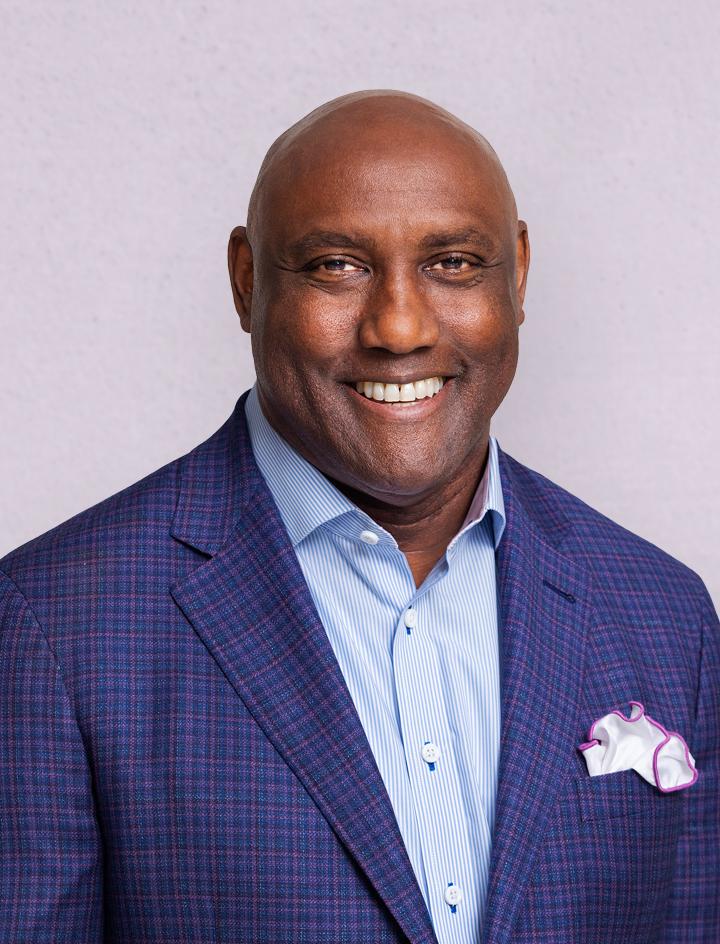One Year Later: Systematic Inequality Will Turn to Sustainable Change...Step by Step
A reflection on the history of economic empowerment in the Black community.
One Year Later: Systematic Inequality Will Turn To Sustainable Change...Step By Step
May 25, 2021
Wall Street has been humming since 1817. The ambient noise of bustle and hustle reaches a crescendo each weekday morning, when the eight-block-long street marking the heart of Lower Manhattan’s Financial District opens for business. And it’s a big business – a symbol of America’s financial markets, and, in many ways, of America.

Some 1,300 miles southwest, Tulsa’s Greenwood District was built "for Black people, by Black people" just after the turn of the 20th century. Black entrepreneurs flocked to Greenwood Avenue, believing there was economic strength in numbers. By pooling resources, "Black Wall Street" flourished, even if its dwellers became increasingly isolated and segregated by a railroad, where standing on the wrong side of the tracks put a successful Black in the crosshairs of Jim Crow oppression.
Unlike Wall Street, where success brought greater access, opportunities, and the early formation of patriarchal dynasties, success on Black Wall Street brought suspicion, jealously, rage, racism, and eventually riots.
While the Greenwood District burned, the Financial District prospered. Fifty years after the Greenwood Massacre, growing up in the segregated South far from lower Manhattan, my eyes saw disparate Americas simply while tagging along as my father drove my mother to work. Now, post-segregation, and a century after Greenwood went up in flames, race still defines the individual perspectives of American exceptionalism.
Last June, following the death of George Floyd on my birthday, I shared my thoughts on America’s relationship with race – a complicated, imperfect journey of divergent interests, bouts of abject failure, but also real progress for some Blacks, who have risen to positions of power and prestige often through the guidance and advocacy of white mentors and sponsors.
Yet, success has still reached too few. Those stories are the exception.
Since then, these injustices have continued against Blacks, Asians, Hispanics, and others based on ethnicity, gender, economic standing, and sexual orientation. Despite weeks-long marches, sermons preaching peace, and corporate America’s resonance to this national issue, cruelty remains in vogue, and wealth disparities remain fixed in a system still benefitting the same glad-handing, access-selling, and multi-generational privilege. Wealth still begets wealth.
Wealth touches so many parts of equality – wages, homeownership, community policing, and access to quality healthcare, as well as long-term financial literacy and planning. It’s a big problem, but as evidenced by the above tale of two cities, it’s not new. Solutions always seem driven by a PR newswire, or a success story to share with shareholders, and they’re typically funded by fleeting capital and organized in silos.
In the months following the national awakening to these issues, I and our team at The American College of Financial Services did a lot of soul searching and a lot of conversing with each other, our colleagues, and our industry peers. We were intentionally deliberate and thoughtful in building a research-driven, applicable, and executable plan to drive sustainable, economic change in underserved and underrepresented communities. I thank our entire College community for their work, support, and encouragement, as well as The College’s Board of Trustees, President’s Roundtable, and President’s Advisory Council, which have not only offered strategic counsel, but have opened their networks to help us engage in productive dialogue across the financial services industry and given of their treasures.
As an accredited, non-profit institution serving an industry responsible for fostering the generational wealth-building of predominantly white families, it’s been fascinating, and heartening, to see the industry’s circuitous, complex reckoning with its role in the wealth gap, but also to hear leading voices share their voyages to effect lasting, economic change for the underserved and to uplift diverse perspectives in this profession.
Many of these leaders believe in our plan – a development that continues to yield reaffirmation and forward momentum just one year after our team’s first internal discussion. In that time, we’ve achieved so much, including:
- The creation of Four Steps Forward, a big, bold plan to promote upward mobility and wealth building, starting first with Black communities across America. It’ll define an approach that we’ll apply to other groups in need.
- The formation of The American College Center for Economic Empowerment and Equality, which is destined to become the flagship center for research, thought leadership, curriculum and course development, programming, and scholarships aimed at closing the wealth gap and cultivating lasting relationships between financial services and all underserved groups.
- The hiring of the Center’s inaugural Executive Director, Karim Hill, who brings decades of financial services and community-corporate partnership experience investing capital to uplift underrepresented and underserved populations.
- The development of a robust, engaging website, www.theamericancollege.edu/equality, to broadly articulate the Center’s path forward and engage partners who will assist us along the way.
- A partnership with The Society for Financial Education and Professional Development to amplify financial education and economic mobility programs with the next generation of Black leaders at Historically Black Colleges and Universities.
- The launch of a research project on trust between Black women and financial services, with a preliminary report expected later this summer.
- The beginning of our work on the curriculum for an executive leadership program. We plan to enroll our first cohort for a Q1 2022 start.
We’re just scratching the surface, but we aren’t in a rush. I’m as eager as anyone to narrow the gap, but I’m more interested in the long-term solutions that close it. Today’s disparities weren’t caused by a few bad apples or propagated by political whims; they’re so deeply embedded in our system, that Band-Aids are no more than concealer.
To follow the clarion call of former Supreme Court Justice Thurgood Marshall, we must express the poised urgency that moves us forward with intention. To actually “do better,” we must embrace that there’s no other choice. That in America, we can’t allow some to traverse sidewalks as an avenue to success, while others of different cultures and creeds lay face down in their footprints.
We can’t be okay with unequal pay for equal work. We can’t shrug our shoulders at the real, lasting effects that wealth disparities have on educational disparities, longevity, generational divides, and public trust. And we can’t expect to fix all of this in a week, month, or year.
Sustainable change takes time. As I wrote last June, "As a nation, we start conversations on race I don’t think we ever intend on finishing. This time must be different."
One year later, I believe it is.
Related Posts
Saluting Veteran Scholars
View Details